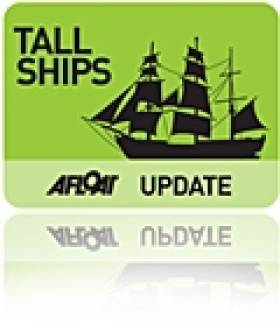Displaying items by tag: Portaferry
Antigua On All-Island Visit
Antigua was originally a fishing boat built in 1957 at Thorne, Yorkshire but her appearance is completely different today. Gone are the fish as the vessel spent four years undergoing reconstruction for the purposes of accommodating paying-passengers. The work was completed in 1997 and this has included the provision of sixteen double cabins in luxurious surroundings.
Individual booking cruises can be made on the brigantine and her fleet-mates which are owned by the Tall Ships Company which take passengers on destinations not just in European waters but also to the Arctic.
The company also operate another brigantine the Artemis, the barque Artemis, the schooner Mare Frisium and the clipper Elizabeth. For further information about the company click here.
Strangford Celebrates Maritime Festival
Plus there's family friendly entertainment for everyone: have-a-go canoeing, boat tours including Sea Safaris and Underwater Wonders LIVE, a seaweed squelch, moth mornings, literary and archeology trails, art exhibitions, fabulous local food, music on the promenade to name but a few and, of course, lots of rich natural and built heritage to explore.
Visit www.strangfordlough.org for a detailed programme of festival events. Some events are free and others require ticket purchase. Tickets can be booked at local Tourist Information Centres; Portaferry - Tel: 028 4272 9882; Ards - Tel: 028 91826846; Downpatrick - Tel: 028 44612233. Also Strangford Lough and Lecale Partnership, Portaferry, (Mon to Fri only). T. 028 427 29005.
The Celebrate Strangford Lough Festival will present the Lough's amazing heritage through activities and events involving many of the people who work and live here. It is organised by the Strangford Lough and Lecale Partnership and funded by the Heritage Lottery Fund, Down District Council and Ards Borough Council, with support from the Northern Ireland Environment Agency and the National Trust.
Portaferry RNLI Rescues Four from Fishing Vessel
The Portaferry RNLI lifeboat was involved in the rescue of four men from a fishing boat that ran aground off the coast last Monday evening, the Belfast Telegraph reports.
The lifeboat along with the Portaferry and Newcastle Coastguard and and Irish Coast Guard helicopter from Dublin responded to a distress call from a 60ft trawler that ran into difficulties close to Ardglass harbour.
All four men on board were rescued and treated by paramedics on scene, and the vessel was later refloated.
Related Safety posts
RNLI Lifeboats in Ireland
Safety News
Rescue News from RNLI Lifeboats in Ireland
Coast Guard News from Ireland
Water Safety News from Ireland
Marine Casualty Investigation Board News
Marine Warnings


























































